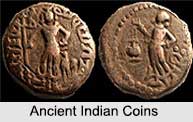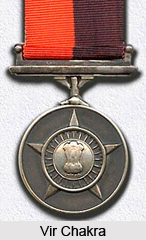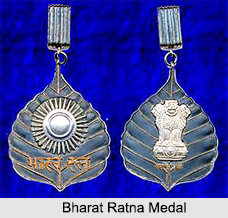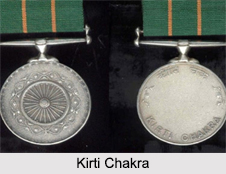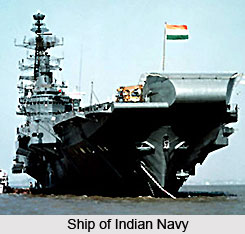 India`s vast maritime interests, it`s geography, trade, Exclusive Economic Zone (EEZ) which is virtually as big as the land mass and millions of sea faring people who live on the coast and in the island territories, make the country a vast maritime nation. It is these undeniable imperatives and the growing importance of the seas to which India would turn to in years ahead which make their security vital for countrymen`s very existence. No nation that aspires for greatness can neglect the maritime dimension. The US, Russia, China, France, Britain and Japan, have all developed maritime infrastructure and have hefty and technologically advanced navies. The seas are directly linked to commerce, which in turn is associated to economy of the countries worldwide. Seas are also the foremost medium of transportation of the energy lifelines. The navies are not only instruments of power projection, but also have the added advantage of inconspicuous presence, flexibility and instant response. In essence, therefore Indian Navy since its commencing and early twenty-first century has been and will continue to be regional in reach, oceanic in outlook and proactive in scope.
India`s vast maritime interests, it`s geography, trade, Exclusive Economic Zone (EEZ) which is virtually as big as the land mass and millions of sea faring people who live on the coast and in the island territories, make the country a vast maritime nation. It is these undeniable imperatives and the growing importance of the seas to which India would turn to in years ahead which make their security vital for countrymen`s very existence. No nation that aspires for greatness can neglect the maritime dimension. The US, Russia, China, France, Britain and Japan, have all developed maritime infrastructure and have hefty and technologically advanced navies. The seas are directly linked to commerce, which in turn is associated to economy of the countries worldwide. Seas are also the foremost medium of transportation of the energy lifelines. The navies are not only instruments of power projection, but also have the added advantage of inconspicuous presence, flexibility and instant response. In essence, therefore Indian Navy since its commencing and early twenty-first century has been and will continue to be regional in reach, oceanic in outlook and proactive in scope.
Merchant shipping tonnage under Indian Navy in the early years of 21st century stood at approximately 7.05 million GRT in 2000. As of October 2003, the tonnage was reported to be 6.21 million GRT. The Indian tonnage ranked 17th at 1.27 percent of the world`s tonnage. Indian shipping under Navy made tremendous strides till the mid 70s, but its growth stagnated in the next twenty years. Since the rejuvenation of economy and emphasis on export-led growth, the importance of this sector has now been realised. Percentage share of Indian flag ships in foreign trade rose from 29.7 percent in 1995 to 30.5 percent in 1998-99; however it was much less as compared to 41 percent in 1987-88.
Another area would be the expansion of coastal shipping and inland waterways. Acknowledging the need of greater importance of this field, sizeable measures have been taken to provide incentives to shipping. All type of ships can now be imported in India through open general license and depreciation rates have been enhanced from twenty to twenty-five. Four Aframax tankers of 110000 tones DWT capacity and two of 93,000 DWT crude oil tankers have been initiated into the Shipping Corporation of India. Orders for 2 ULCCs have also been placed.
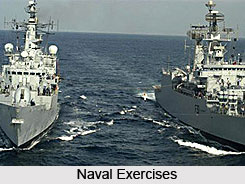 As a path-breaking initiative by Indian Navy in the early years of twenty-first century, defence cooperation was growing with countries like Israel and South Africa. Similarly in the maritime dimension, in the eighties, handful of India`s naval ships used to undertake good-will visits to the neighbouring countries. At present, this number has shot up to over forty. Very little interaction in the form of naval exercises used to be instituted with foreign navies during those days. Today Indian navy is exercising with all the major navies, including the Chinese PLA(N). Joint patrolling in the Malacca strait today is a vision of reality. Similarly Indian Navy being asked to provide security to the African summit showed that the presence of a responsible regional maritime power adds to the stability of the region and is welcomed by the concerned countries.
As a path-breaking initiative by Indian Navy in the early years of twenty-first century, defence cooperation was growing with countries like Israel and South Africa. Similarly in the maritime dimension, in the eighties, handful of India`s naval ships used to undertake good-will visits to the neighbouring countries. At present, this number has shot up to over forty. Very little interaction in the form of naval exercises used to be instituted with foreign navies during those days. Today Indian navy is exercising with all the major navies, including the Chinese PLA(N). Joint patrolling in the Malacca strait today is a vision of reality. Similarly Indian Navy being asked to provide security to the African summit showed that the presence of a responsible regional maritime power adds to the stability of the region and is welcomed by the concerned countries.
The defence budget of India in the last ten years has varied between 2.16 percent to 2.78 percent of the GDP (Gross Domestic Product). Indian Navy`s share of the defence budget was 16.70 percent in 2003-04. Situation quite manifests itself that Indian Navy in the early 21st century was already into a process of colossal betterments. In the category of Large combatants, the Navy has already operated two aircraft carriers and experience has proved that to operate a level of two carriers, it is essential to have a third to guarantee operational availability in view of prolonged refit and maintenance cycle of these ships.
Similarly, a level of twenty frigates/destroyers had been furnished for in Defence Plan forty years ago and the future essentials have been held to this level, despite the manifold increase in the responsibilities of the Navy. The levels of submarines have also been held to those, which the Navy has operated already. Support ships have been amplified, since the area of operation would require broadened reach and an ability to sustain operations far away from home bases. The level of Mine Counter Measure Vessels has also been amplified in view of the crucial importance of defending ports and harbours.
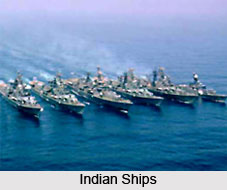
The development of the Indian Navy has demonstrated that there was a high growth phase in the 1950s. This is surmised to have happened on the advice of India`s erstwhile rulers who understood the importance of sea power far better. This was despite the fact that in their view the Indian Navy was to perform a subaltern role to that of the Royal Navy. In fact, the first fifteen years after Independence saw as many ships added to the fleet as in the next three decades. There was a period of depression however after 1962. This was mainly due to country`s preoccupation with the land borders. Indian Navy`s stellar situation in the early years of twenty-first century had changed everything in 1971. The Navy did the nation proud in the Pakistani intervention and insurgency. Since then, slowly but surely the magnitude of the maritime dimension in national security has been accepted as an indispensable ingredient. Deploying the eastern fleet on the western sea-board with the western fleet had a salutary effect during the Kargil-Drass operations.







